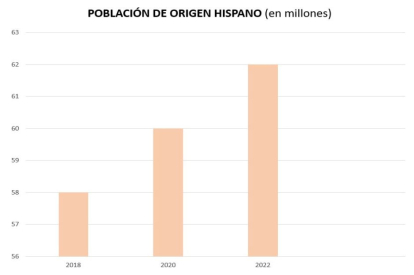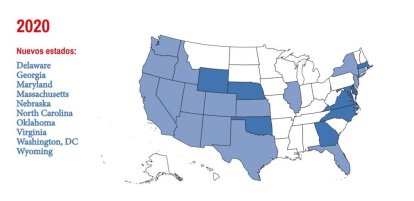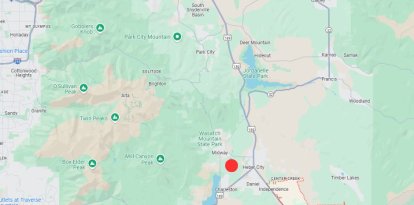Spanish spoken: 57 million Spanish speakers in the U.S.
The link between the Spanish language and the U.S. continues to strengthen with the growth of the resident Hispanic community and the rise of Spanish in education.

(Pixabay)
The enrichment of a language is not only measured by the vocabulary it acquires but also by the number of speakers it gains over time. This fact happens year after year to Spanish. Currently, Spanish is in a 'sweet spot' around the world, as more and more people are choosing to learn and speak the language. This is even more so in the United States, where interest in learning and using Spanish is upstoppable.
The Hispanic Council published the third edition of its report Spanish in U.S. Politics, written by Daniel Ureña and Pablo García Bautista. The document updates data on the rise of Spanish and the Hispanic community.
As of today, a total of 57 million residents speak Spanish. That's 42 million who are proficient in the language, plus another 15 million who have limited proficiency. At the same time, the Hispanic community has a growing presence in the United States. An estimated 6.5% of Hispanic Americans speak English on a daily basis and do not use Spanish as their primary language.
The Hispanic Community
Every ten years, the U.S. Census Bureau conducts the official population count. The latest, from 2020, recorded a census of 331 million inhabitants. As reported by The Hispanic Council, in 2010, 16.3% of the total U.S. population was of Hispanic origin. Ten years later, the figure increased by 2.4 points to 18.7%. In 2018, there were 58 million Americans of Hispanic origin. In 2020, there were 60 million and today there are 62 million, so each year the U.S. gains one million more Hispanics.

Hispanic population graph
States made up of more than 10% Hispanics
As many as 27 states have Hispanic populations exceeding 10% of their census totals. In the year 2000, many of the Sun Belt states exceeded that barrier: California, Arizona, Florida, Nevada, New Mexico and Texas. They are joined by New York, New Jersey, Illinois and Colorado.
In 2010, the Hispanic community began to grow in the northwestern states, such as Idaho, Washington and Oregon. In addition, the Hispanic population increased to 10% in Kansas, Utah, Connecticut and Rhode Island.
There were 10 states that joined this list in 2020. Delaware, Georgia, Maryland, Massachusetts, Nebraska, North Carolina, North Carolina, Oklahoma, Virginia, Wyoming and Washington, DC recorded more than 10% of Hispanics in their population registers.

States with more than 10% Hispanic population in 2020. Source: U.S. Census Bureau-The Hispanic Council
Spanish boom in education
Within the U.S. educational system, more and more students are choosing to learn Spanish. In 2021, a total of 24,069,206 students studied the language as a foreign language. This number represents an increase of 2 million over 2020 and 3 million over the 2019 base.
The number of Spanish learners indicates that the language is unrivaled. It is the most studied language at all levels of education.
Spanish in the world
Up to 591 million inhabitants know and speak the language around the world. The Hispanic Council shows that this total represents an increase of 11 million people over 2020.
The number of people who use Spanish as their mother tongue also went up. A total of 492 million people use Spanish as their base language, 12 million more than in 2020. Specifically, it is the world's second most spoken native language after Mandarin Chinese and the third in terms of users.
RECOMMENDATION





















